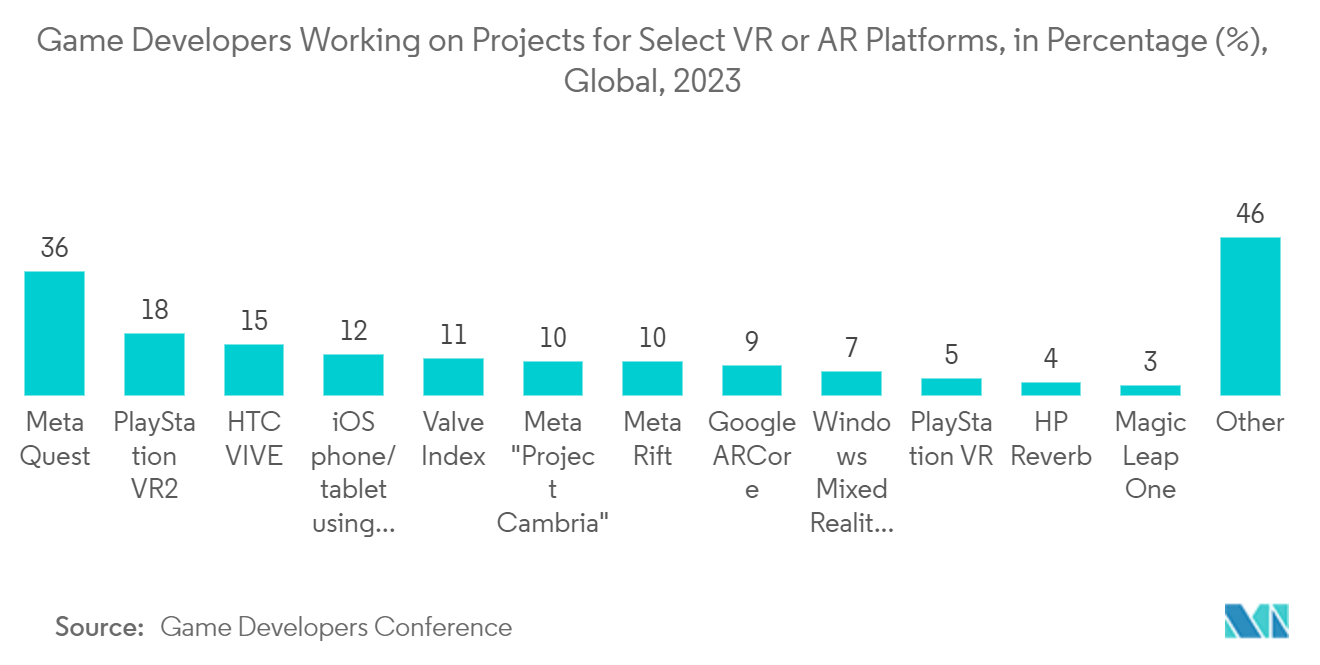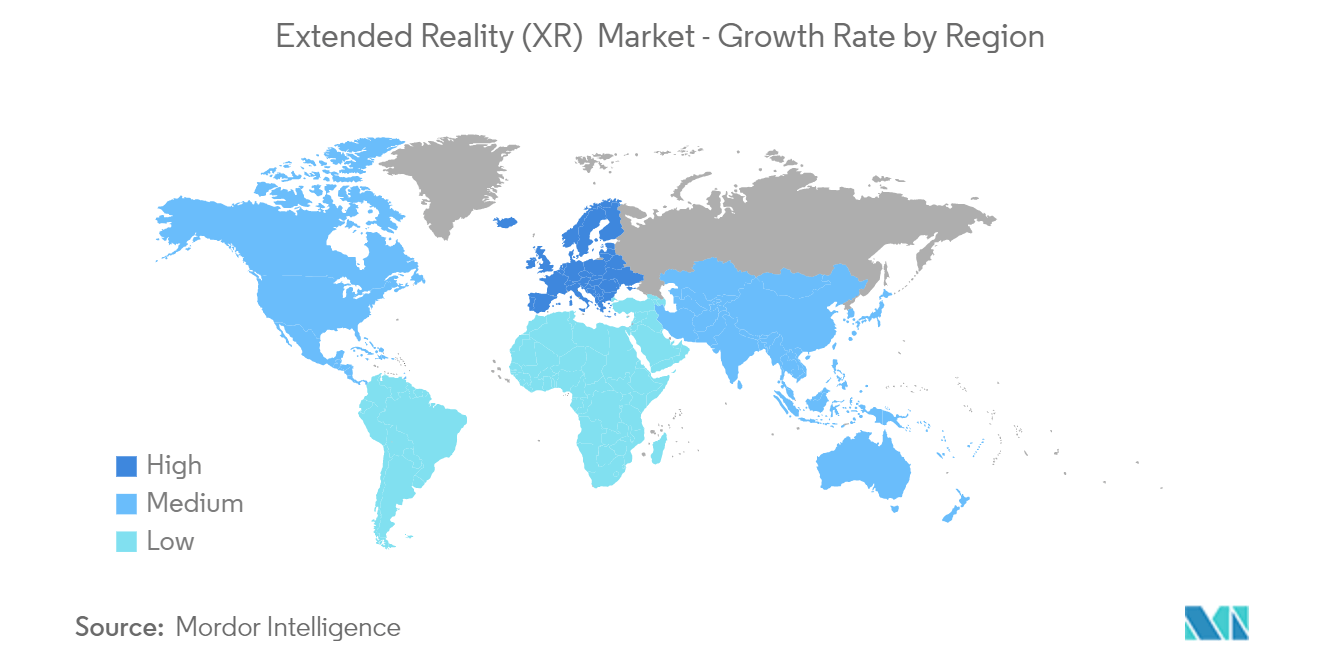Market Trends of Extended Reality (XR) Industry
Media and Entertainment End User Segment Holds Significant Market Share
- Over the last few years, media companies have examined XR technology as a new frontier for storytelling and a possible advertising outlet. They have partnered with companies developing virtual reality (VR) headsets and software developers broadcasting VR events, attempting to determine how to build the best VR content. Furthermore, some firms are also beginning to invest in VR companies.
- The XR's greatest marketing potential lies in its engagement capabilities, which allow companies to build emotional connections to their products and services. With XR-powered technology, media companies can reach their target audience more effectively. Simulating real-world experience, XR applications make the customer experience more interactive, engaging, and appealing. As a result, digital agencies and media buyers can build an emotional attachment to their brands.
- VR is being used to allow fans to watch live sports and choose viewing perspectives and see them up close. The viewer can virtually sit in the seats of their favorite stadiums with this immersive experience. XR can further allow the fans to see data and analytic representation of the ongoing or past games as and when they want to. Virtual reality and alternative reality gaming are more visions of the future in the gaming world. According to Game Developers Conference 2023, 36% of responding game developers globally are actively developing games for the Meta Quest virtual reality headset.
- Various factors, including 5G implementations and adoption, availability of capable hardware at an affordable price, and technology maturity, support the growth of extended reality in media and entertainment. The emergence of time-critical communications over 5G networks makes it possible to offload parts of the XR processing and functionality to the edge cloud and enhance the user experience with lightweight and cost-efficient head-mounted displays (HMDs).
- Almost all OEM companies that have introduced products provide the developers with a kit to help create content for the entertainment sector, which has a high potential for commercialization. The initial cost of these devices is high, which has resulted in the OEMs offering discounts and providing the product at more affordable prices to the developers for MR content. This strategy is expected to trigger the fast adoption of such devices and help the companies provide economies of scale benefits to the customers.
- Moreover, the studied technology is witnessing innovations in entertainment as automotive providers are enhancing their car models by using extended reality to cater to their customer's demands. For instance, in November 2022, Holoride, an extended reality in-vehicle entertainment provider In-Car Entertainment Platform for selected Audi models in Germany. The technology provides the riders with interactive and passive content that reacts to both them and the car's motion.

North America Holds Largest Market Share
- The North American region of the extended reality market is expected to grow significantly over the forecast period, owing to many vendors making considerable investments in market innovation.
- Globally, the United States has been one of the highly innovative augmented reality (AR), Virtual Reality (VR), and mixed reality (MR) markets. Most of the companies that are advancing in this technology are based in the United States. High technology exposure and the ease of smart devices have created a strong demand in the region. Microsoft’s AR product, Hololens, first released in the United States and Canada, received a positive response from users nationwide.
- The region is also expected to hold a significant market share. The US Government has been finding both direct and indirect ways to use these technologies to facilitate innovations and promote prosperity. Moreover, the Foreign Service Institute at the State Department has introduced VR as an experiential learning tool in specific training. Moreover, various AR and VR training programs have been implemented to develop local workforces and manage wastewater. The region is also dominating the market owing to the high technology exposure and the easy availability of resources, which created a robust demand for extended reality devices. Many companies in the region are deploying innovative technology into their AR/VR wearables.
- The telecom companies in the region are also aggressively making efforts toward attracting customers to use their 5G networks. Hence, these regional vendors are investing and innovating software and platforms for the development of AR applications by leveraging the upcoming 5G technology.
- According to the GSMA, the number of smartphone subscribers in the North American region is expected to reach 328 million by 2025. Moreover, by 2025, the region is also expected to witness an increase in the penetration rates of mobile (86%) and internet (80%), recording the second-highest rates globally. As smart devices, especially smartphones, play a major role in the development of AR technology, the region offers a huge opportunity for the growth of the market studied over the forecast period.

